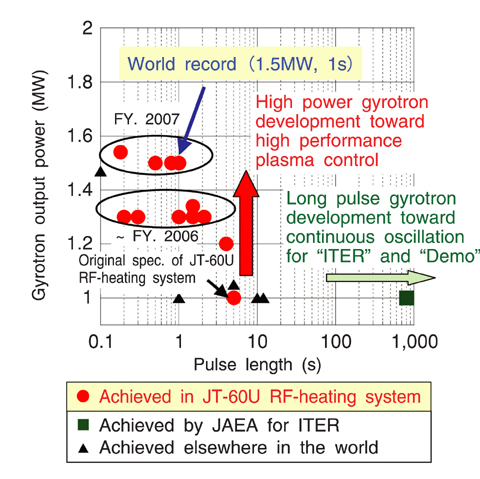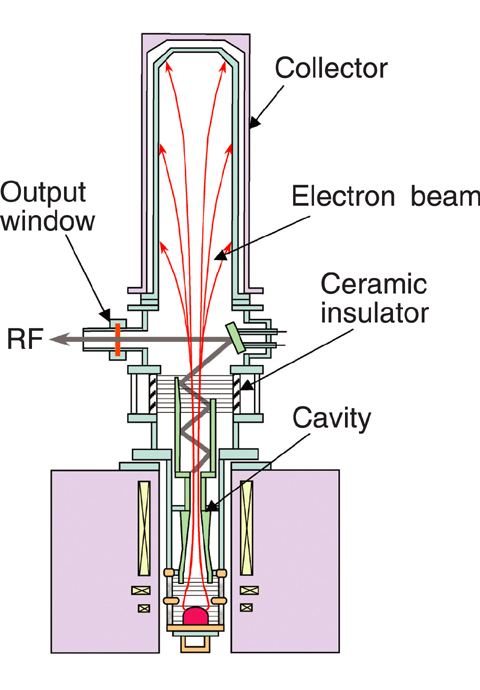
Fig.3-8 Performance of the world's gyrotrons (>1MW)

Fig.3-9 Schematic view of gyrotron
Gyrotron oscillation power of 1.5MW with pulse length of 1s, a world record, was achieved by the gyrotron of the JT-60U RF-heating system (Original spec.: 1MW for 5s) (Fig.3-8).
RF injection with pulse length over 1s is an important issue in fusion experiments because the typical time scale of phenomena in plasma is around 1s. Capability to do experiments on controlling high performance plasma strongly depends on the maximum RF power. Therefore, it is essential to improve the oscillation power of each gyrotron and also to develop a long pulse gyrotron, striving for continuous oscillation in future devices such as "ITER" and "DEMO". In a gyrotron system, electron beam and RF power heats up the internal components. That leads to failure of the components, arcing and sudden oscillation termination due to thermal expansion of a cavity, especially during high power operation. Those phenomena had limited oscillation power to 1MW in previous fusion experiments. Oscillation power of over 1.5MW had been achieved only in short pulse tests (less than around 0.1s)with gyrotrons without enough heat removal capability. Important issues are to clarify heat distribution, to improve high-temperature durability, and to improve heat removal capability. It is important to demonstrate stable oscillation with high power and pulse length over 1s.
In previous work, we found that a ceramic insulator was dielectrically heated by stray-RF radiation (Fig.3-9), so we introduced a silicon-nitride ceramic into one of the JT-60U gyrotrons in place of an alumina ceramic. Temperature rises of some internal components were measured and investigated over a wide range of oscillation power up to 1.3MW by means of the gyrotron. If a scaling up of those experimental results is possible there could be higher beam current operation with the improved cooling performance of the cavity. We have achieved stable 1.5MW oscillation for 1s by precise optimization of oscillation conditions using the improved gyrotron. Transmission of this high-power RF has been also demonstrated. Moreover, thermal expansion of the cavity had no significant ill effect on stable oscillation and the cavity temperature reached its maximum in 0.5s and saturated. Therefore, further pulse length extension with high power is possible in the near future when there are improvements in the power supply and transmission line.